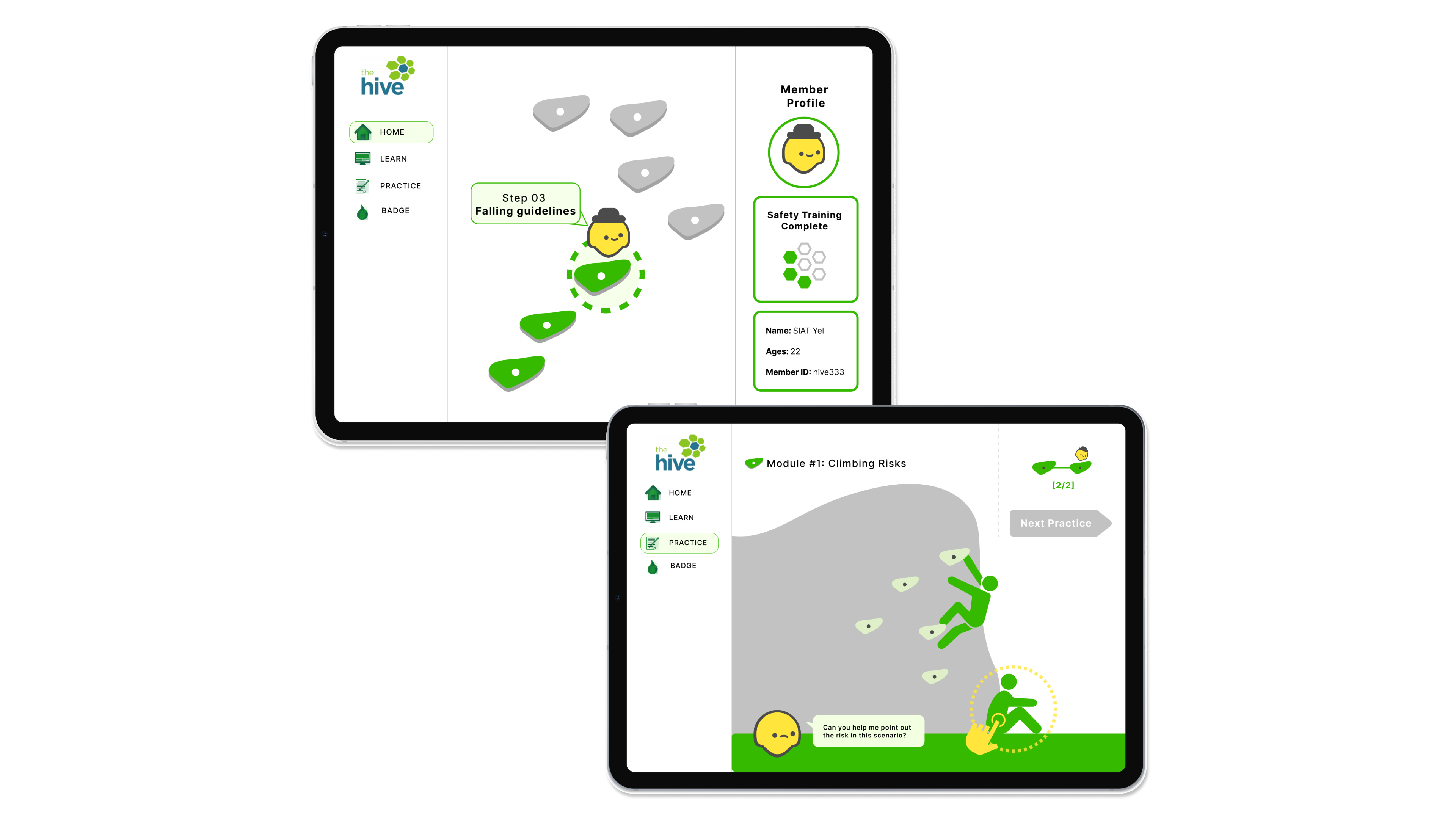

In IAT333 Interaction Design Methods, our group was given the opportunity to collaborate with a client of our choice to aid them with improving an aspect of their businesses. We chose to collaborate with The Hive Climbing Gym, who wanted us to further develop their idea of a safety orientation in video format.
My Roles
Product Designer
Ethnographic Researcher
Teammates
Cheryl Lee, Miji Kim, Joel Choi, Ellie Kim
Timeline
September 2024 - December 2024
Tools
Figma
Procreate
Adobe After Effects
When we first reached out to The Hive, they presented our group with their idea of implementing a mandatory safety video that all climbers, new and old, have to watch. This leads us to our initial design focus:
Observations and user research was done in person at the Hive Climbing gyms. I went to multiple locations to interview staff about their current safety protocols, while also observing the behaviour of the climbers that frequent the establishment.
We also conducted surveys with climbers to gather their opinions on watching safety videos.

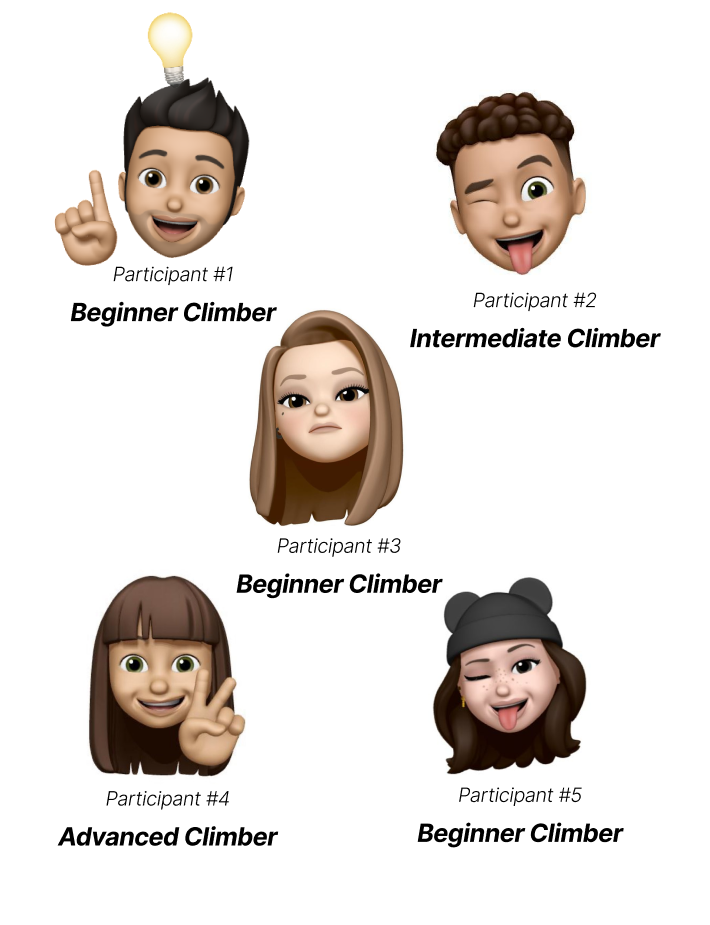
Throughout the semester, our group conducted many surveys, interviews, and workshops with climbers that go to The Hive in order to gain insights on how people interact with safety orientation videos.
We found that the majority of people that we interviewed found that the safety video was boring and uninformative, especially because of the video's delivery. A common gripe that all climbers had with the video were it's lack of subtitles and slow pacing.
The Hive emphasized the importance of avoiding liability through the video. After synthesizing the findings of our research and workshops, our group came to the conclusion that the best way for The Hive to avoid legal liability is if the climbers actually engage with the content of the video and retain the safety information being presented to them. This leads us to our new design focus:
We first started off our process with ideating on 3 concepts that can address the concerns within our design focus.
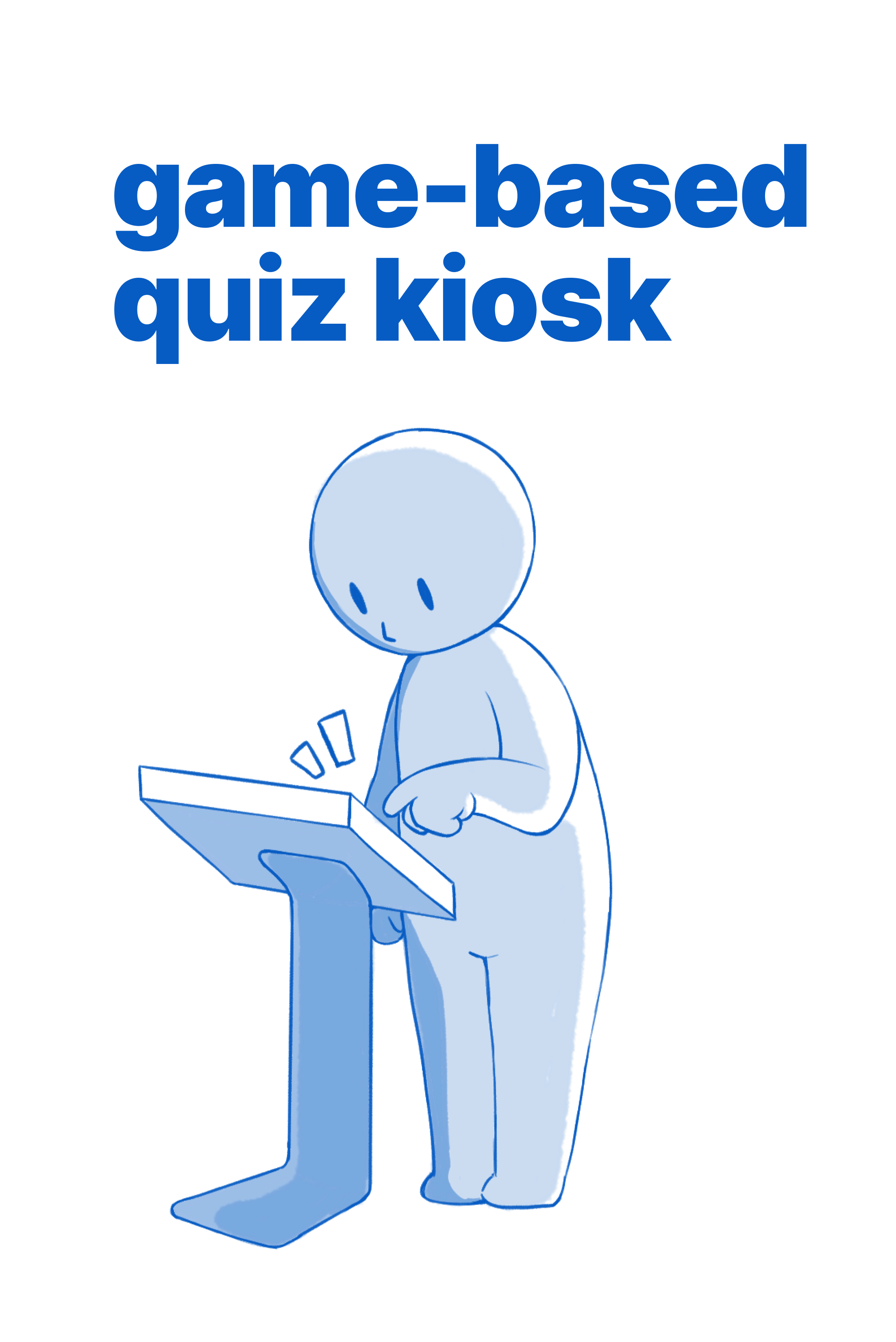
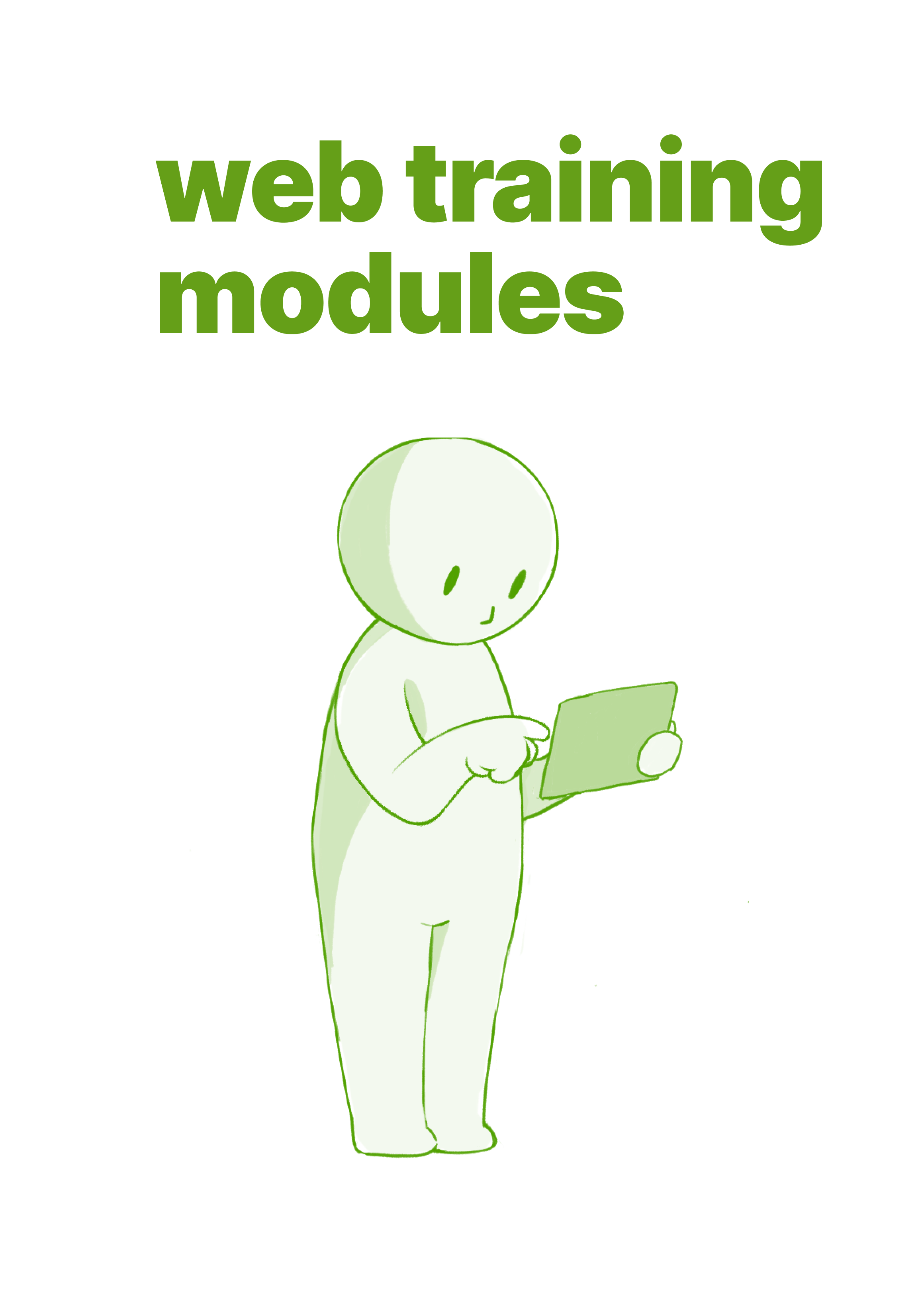
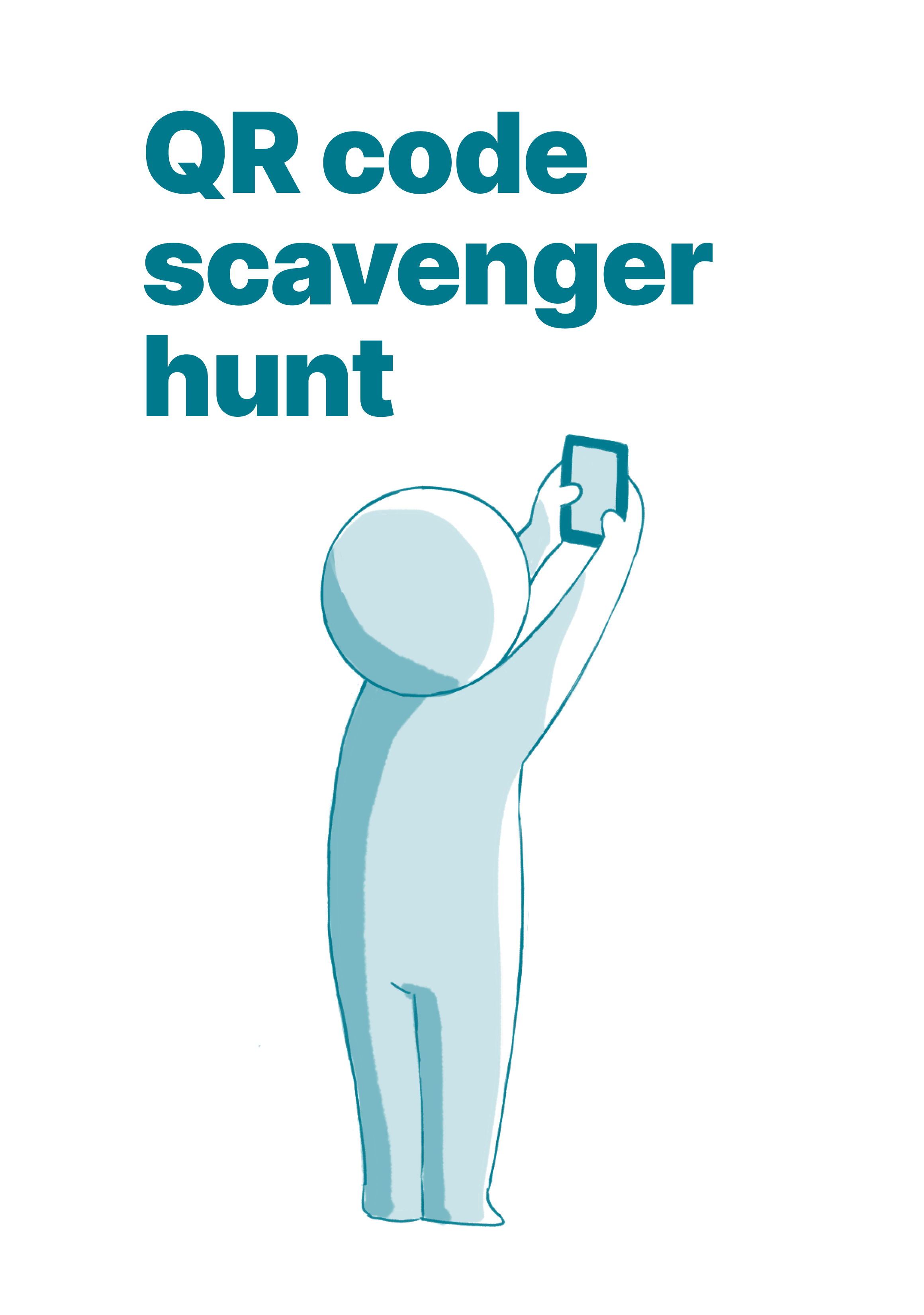

Our first concept focusses on the possibility of increasing engagement through fun. Expressive visuals and interactive games are what we think will allow for people to not only focus better on the content, but enjoy the experience overall.

Our second concept focusses on the information retention aspect, as the design centers on information recall. Our hope is that by quizzing climbers with a modular app on their knowledge of the safety video, they are more likely to remember the important parts of the safety orientation.

The third concept focusses on how we want to increase the interactive aspect of the digital orientation. By having climbers go around the gym to collect the segmented videos is a fun way to motivate climbers to actively seek out watching the video.
We proceeded to narrow down the concepts that we liked the most and created mockups to help visualize the what the possible final product would look like.
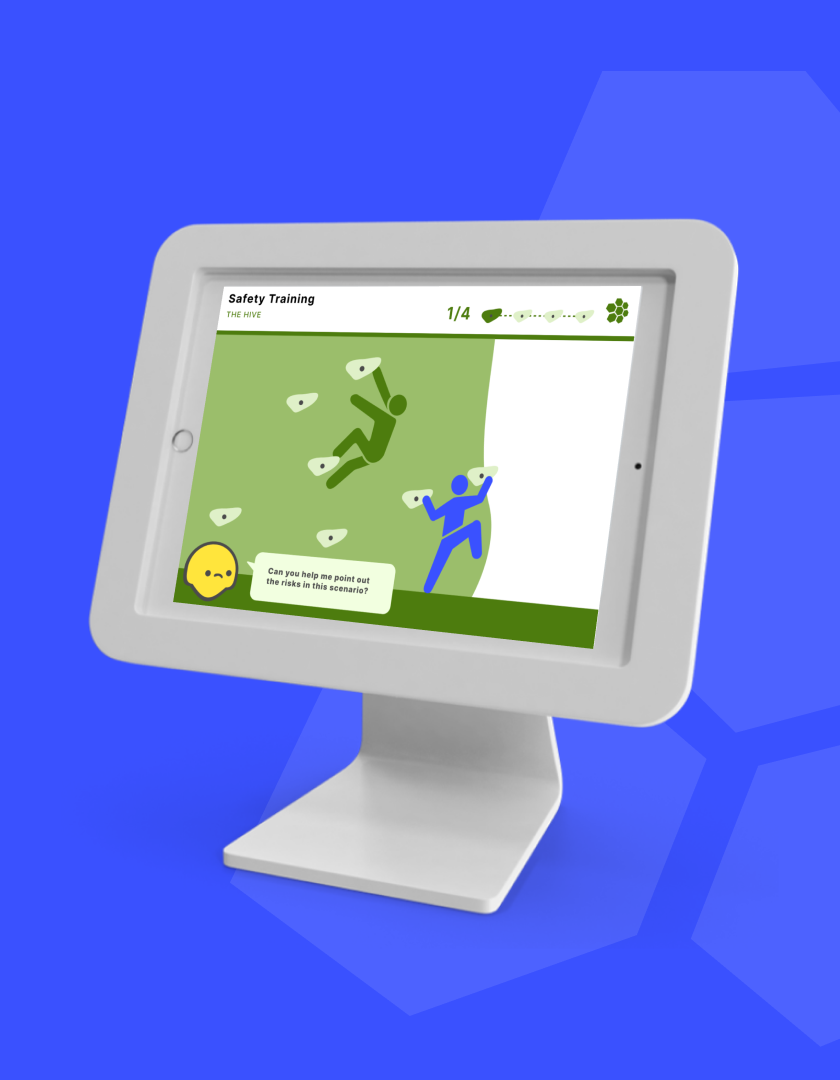
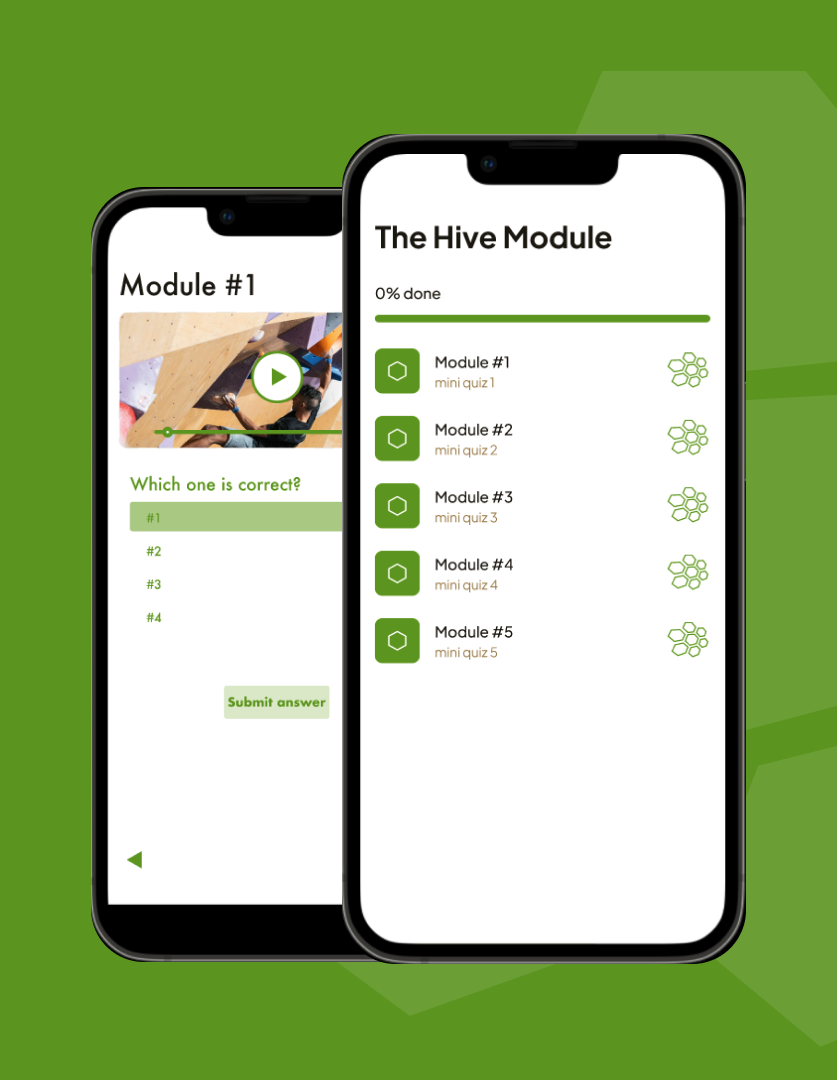
Our final product is a gamified digital orientation. It is designed to work for mainly tablets and mobile devices for easy and quick access. Before climbing at The Hive, climbers will have to watch the segmented orientation video as well as complete an interactive game to verify their understanding of the content.

The layout and visuals are reminiscent of Duolingo and other similar language learning apps because we wanted to ensure that users are not bored while engaging with the content. The visual feedback of progress also ensures that climbers know the pace of their own progression.
Working with The Hive made me realize how many different aspects must be considered when creating an interactive design. Our group wanted to focus on how we could maxmize engagement and interest, while The Hive was mostly concerned about the legality of the entire situation. I definitley had to learn how to balance my own interests with the interests of the company that I am collaborating with.
There was also a lot that I learned through doing onsite ethnographic research. Working directly with the people that I am designing for really allowed me to gain deeper insight into the the thought processes of our target audience.
If there was one thing I would change, I would change the way I went about the visual design of our final product, as I believe that the visuals can be more coherent and expressive.